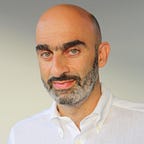In the 2021 Indian based American movie, White Tiger, the lead character, Balram, says,
“The greatest thing to come out of this country… is the Rooster Coop. The roosters in the coop smell the blood from above. They see the organs of their brothers…They know they’re next. Yet they do not rebel. They do not try to get out of the coop. The very same thing is done with human beings in this country.”
The Rooster Coop is a metaphor for describing how oppressed the poor are in India. The caged roosters at the market watch each other get slaughtered but can’t do anything about it.
Similarly, he believes that India’s poor are so crushed by the wealthy and powerful that they behave in the same way as the rooster. They are helpless, paralyzed by hopelessness. He even argues that the poor actively stop each other from escaping, or worse, are enslaved by a culture that expects them to take such abuse and servitude.
Balram believes that the poor can only change and break out of the Rooster Coop if they are willing to sacrifice everything, including attachment to traditional morals and one’s family. However, that’s very rare, and only one in a generation can do that, just like the White Tiger’s rarity.
Today, we are inundated with self-help material in the form of seminars, viral blog posts, New York Times Best Sellers, and YouTube shorts, all of it advising us on how to change.
We consume information. We do some work. But hardly enough to constitute real change. We don’t do enough of it on a deep level. Before we finish, we are encouraged to celebrate our wins. Instagram is full of people winning battles, but where are the scars that show we’ve won the war.
The reality is that change is not only hard but long. We’ve all been brought up in set ways. Most of our conditioning is done in our childhood. The brainwashing doesn’t only come from our parents, but theirs too — also, our teachers, our societal leaders, the media and all the information we’ve consumed.
Propaganda works so well that we find it hard to switch allegiance from Coke to Pepsi when both are only sugared water.
The Story of Marissa Panigrosso (as told by Shawn Coyne)
In his wonderful book The Examined Life: How We Lose and Find Ourselves, psychoanalyst Stephen Grosz tells the story of Marissa Panigrosso who worked on the 98th floor of the South Tower of the World Trade Centre. She recalled that when the first plane hit the North Tower on September 11, 2001, a wave of hot air as intense as opening a pizza oven came through her glass windows.
She did not hesitate. She didn’t even pick up her purse, make a phone call or turn off her computer. She walked quickly to the nearest emergency exit, pushed through the door and began the ninety-eight-stairway decent to the ground.
What she found curious is that far more people chose to stay right where they were. They made outside calls, and even an entire group of colleagues went into their previously scheduled meeting.
Grosz suggests that the reason every single person in the South Tower didn’t immediately leave the building is that they did not have a familiar story in their minds to guide them.
“We are vehemently faithful to our own view of the world, our story. We want to know what new story we’re stepping into before we exit the old one. We don’t want an exit if we don’t know exactly where it is going to take us, even — or perhaps especially — in an emergency. This is so, I hasten to add, whether we are patients or psychoanalysts.”
Why would the others remain rooted in their places in such extreme circumstances?
Because they are human, and we, humans, find change difficult; practically impossible. From small decisions to big ones. From particular to universal, change and discomfort doesn’t come naturally to us.
Like most of us, they probably thought that there was little chance of another plane striking their tower. Also, leaving would mean they were overreacting and running scared in front of their colleagues.
We are built to expend the least energy, be risk-averse, and conform to what the rest of the group does. That’s how we’ve survived and evolved for thousands of years.
Change requires both risk and much effort. It also requires that we revisit our personal history dissecting each ancient belief of ours to see if it still serves any purpose. Just like a brilliant eye surgeon would cut into our retina with precision and complete care.
To change means that we must confront our sense of loss in accepting that we need to let go of old parts of ourselves because they no longer serve our new ways of being.
Marissa Panigrosso was the exception.
Are you ready to be that ‘’White Tiger?”
If you enjoyed this post, please share with your friends!
Join thousands of people seeking to discover their purpose while using it to impact the lives of others in our weekly newsletter.
